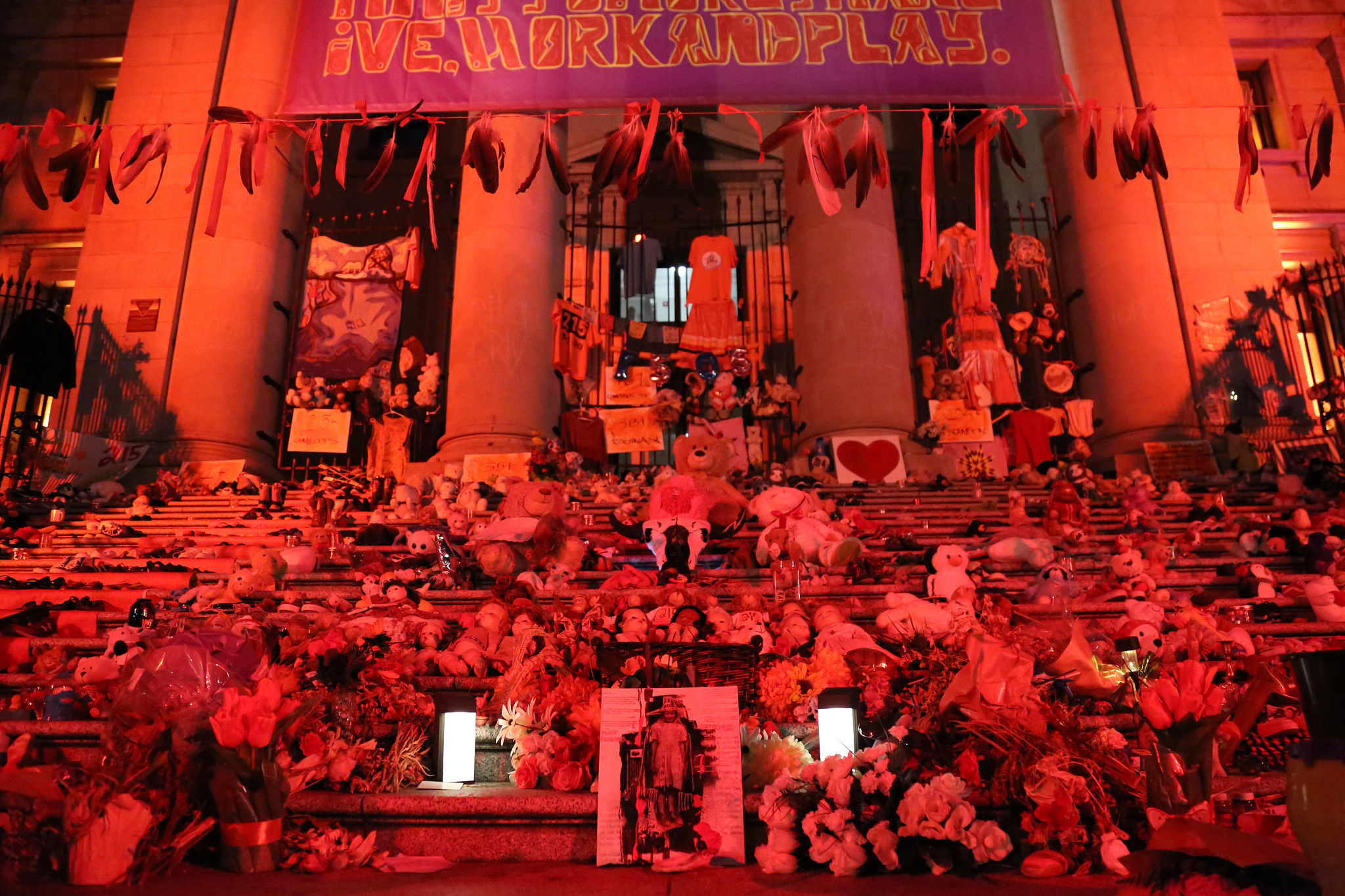
Vancouver Art Gallery's Robson facade
lit orange in memory of Indigenous children in Vancouver, Canada, July 23, 2021. /Getty
Vancouver Art Gallery's Robson facade
lit orange in memory of Indigenous children in Vancouver, Canada, July 23, 2021. /Getty
The discovery of over 1,300 remains or unmarked graves near former residential schools for Indigenous children in Canada shocked the world. How did such schools operate for over a century? Why has the cultural genocide been openly neglected? Liu Xin talked to the chief of a First Nation, a man with both Chinese and First Nations heritage, and a former reporter who tried to shed light on the atrocities. Below is a transcript of the interview.
15:38
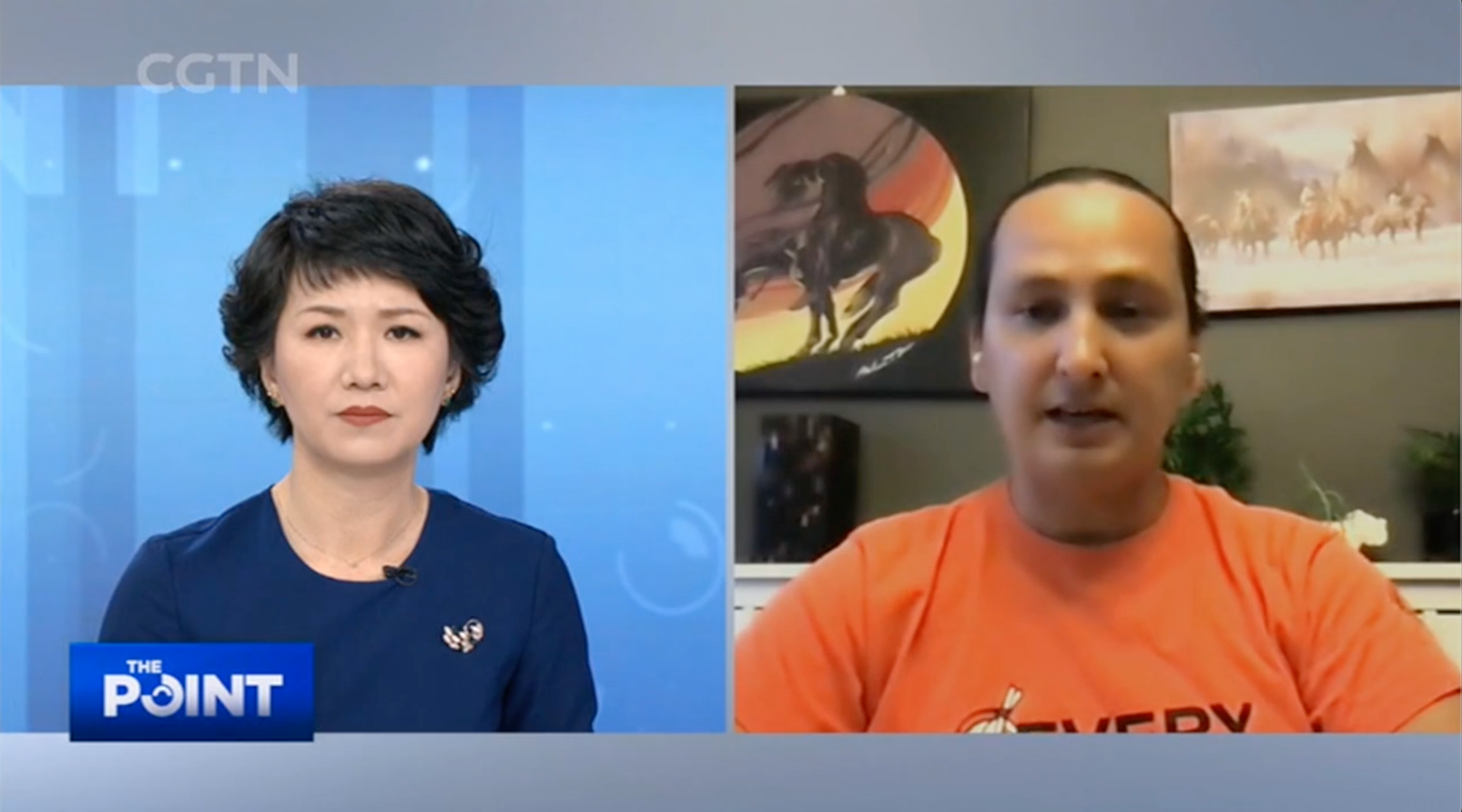
Liu Xin: "We always knew that there were graves here," a First Nation chief told a news conference after over 700 unmarked graves were found at a residential school site for Indigenous children in Canada. Just one month before that, the remains of over 200 Indigenous children were found in unmarked graves near another residential school in British Columbia, Canada's westernmost province. Canadian Prime Minister Justin Trudeau said they are a shameful reminder of the systemic racism, discrimination and injustice that the Indigenous people have faced and continue to face.
Why did such schools run on for more than 100 years? What kept the atrocities in the dark for so long? I'm honored to be joined by the Chief himself, Cadmus Delorme of the Cowessess First Nation from Regina, Canada. Mr. Delorme, thanks very much for joining us today.
Cadmus Delorme: Thank you very much.
Liu Xin: Let me give people a rough timeline of the recent discoveries that I was talking about. Since May this year, over 1,300 remains or unmarked graves were found in Canada.
On May 27, the remains of over 200 Indigenous children, some as young as 3 years old were found in unmarked graves on the grounds of a former residential school in British Columbia.
On June 24, the Cowessess First Nation says it found 751 unmarked graves at the side of another former residential school in Saskatchewan.
On June 30, the remains of 180 people were discovered in unmarked graves on the grounds of another such school, near Cranbrook in British Columbia.
And on July 8, more than 160 unmarked graves were found by the Penelakut Tribe in their grounds and foreshore. It was the fourth such discovery this year.
So, Mr. Delorme, the discovery involving your tribe was the biggest so far. What do we know about these graves in Saskatchewan, and who do they belong to, for instance? How many were children?
Cadmus Delorme: Thank you very much. We use penetrating radar system, and we went over 44,000 square meters. We call this phase one. In 1885, the Roman Catholic Church led by an archdiocese arrived on our First Nation. And in 1898, the Marieval Residential School opened its doors on Cowessess. Children were forced to go to this residential school until the 1970s. The amount of children that never made it back home are buried in this gravesite. It is a Roman Catholic Church-run gravesite. So anybody who was baptized and went to that church from 1885 to as far as 1980 are also buried in this gravesite.
So they're not all children. In around 1960, the archdiocese, the leader of this church, had all these head stones removed. And so today they are unmarked graves. We did not know how much we were going to find. And when our final number was 751, we have to tell our story.
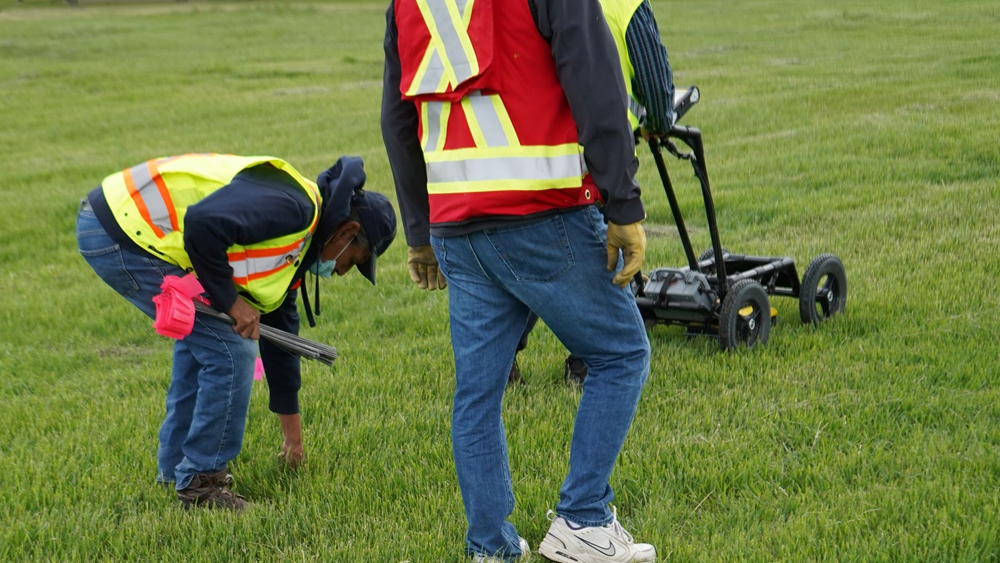
A crew performs a ground-penetrating radar search of a field near the former Marieval Indian Residential School in Grayson, Saskatchewan, Canada, June 18, 2021. /Reuters
A crew performs a ground-penetrating radar search of a field near the former Marieval Indian Residential School in Grayson, Saskatchewan, Canada, June 18, 2021. /Reuters
Liu Xin: What do these graves tell you about what might have happened in the schools and on what scale?
Cadmus Delorme: I'm not a residential school survivor. As an elected chief, my parents went, my grandparents went, and my great grandparents went. I am the first generation to not attend residential school. When we had to say our numbers of 751, the gravesite was the conversation. But the trauma, the negative impact, the memories in these survivors started to come up. And these stories that are being told are just tragic, from young children having to dig the hole for other children who passed, to remembering seeing a child run away. And at that time, they thought they probably made it home, and they always thought maybe they should run away too.
Now they're starting to think maybe that friend didn't it make it home, maybe they passed, and they got buried there. So, it's just triggering all the intergenerational trauma and memories that many have buried away in their heart to not talk about. We need extra mental and emotional support right now for all of them so that we can all heal and move forward with this situation.
Liu Xin: More than 150,000 First Nations, Metis and Inuit children were forced to attend church-run, government-funded schools between 1870s and 1997, that's according to a report from the Truth and Reconciliation Commission. The report called this "a best a cultural genocide." Do you agree with this conclusion?
Cadmus Delorme: This was genocide. I say was, because it no longer is happening, but it was. Residential schools in Canada between, 1880 and 1970 had one purpose: to brainwash Indigenous people to not think like Indigenous people.
Today, our language is minimal. Today, our spirituality is still there, but some question the faith of our spirituality. So, we are recovering, we are decolonizing, but it is not an easy goal. Today's government inherited this, we inherited this, but we all have to make sure that we focus on strengthening the Indigenous people as we move forward.
The topic about genocide is important because genocide is admitting that a wrong happened. This is policy, legislation and government funded at one time that put us in this state. Today's governments are investing to try to get us back to a state that we should have been at the beginning.
In Canada, we have some reflection right now to do. Canada is one of the greatest countries in this world. It is a G7 country, it's a developed country. We just have to focus internally for the next months and years to make sure that our shared responsibility of the First People is a priority moving forward. As a chief, we're doing our part. Canada stands beside us. We all know that there is some negativity in the air, there is some negativity happening, but we are focusing on the end goal to making sure that as a First Nation, that an Indigenous Nation in Canada, that we will be who we are as Indigenous people and being proud Canadian citizens at the same time.
Liu Xin: Of course. That's why we were doing this program as well to understand exactly what happened, what allowed this to happen for so long and why it has taken so long to uncover the truth, because according to the witnesses who attended these schools, and I've seen reports, for instance, they would escape and they will report, you know, the atrocities to their family, to the police, whoever they could turn to help. But nobody seemed to believe them, even including their parents. Could you explain to us why possibly?
Cadmus Delorme: You know that the brainwashing, the purpose of residential school was a fear tactic. When a young kid would get there, you know, I've heard the stories myself, that they would wash them because they would tell them they were dirty. They would, you know, make them pray with the Bible, because they would tell them that their parents' way of praying was devil. It was wrong. And so, if they spoke any of their Indigenous language, they were physically hit to make sure that they wouldn't speak their language.
So then, as they got older and then the second generation went to residential school, the parents wanted to persevere and make sure that their children were in survival mode, because it wasn't an option to not go to residential school.
The RCMP, our Canadian force, you know, enforced it, the Canadian government's policies enforced it, the, you know, the local officials enforced it. So, it wasn't an option for certain times. And I'm talking from 1880s to 1970s. I'm not talking 2000s.
We're talking at a time when, you know this was enforced. And so that fear of, you know, don't speak Indigenous language was, you know, there to keep survival mode. And so, you know, that is why today, your comments and your research that you are sharing, why it was so, why wouldn't we just allow it to happen?
You know, as a generation today, I do learn that I at one time, it was really tough to not make it happen, because you really didn't have too much support to not go.
Liu Xin: In 2015, the Truth and Reconciliation Commission or TRC urged 94 calls to action for governments at all levels. However, only eight seemed to have been completed, that's according to a 2020 update by the Yellowhead Institute, which supports Indigenous peoples' rights. If that is the true case, why didn't these actions attract a wider public attention at the time?
Cadmus Delorme: There's no legislation to implement the Truth and Reconciliation, so I want to explain what the Truth and Reconciliation is. After all these 100,000 residential school survivors told their story, these 94 calls to action were given in 2015 to governments to implement, to social clubs, to individuals. Anybody who is a proud Canadian or friend of Canada should implement these so within one generation we can move past that intergenerational trauma that many Indigenous people live with today.
There was no legislation given, there was no mandate given from government. It was just a moral obligation. And you know, in Canada, sometimes, you know, accidental racism, ignorance, still continues. You know that old tough attitude of get over it, you know. That was the past, you know. And so, it's not that easy, it is intergenerational trauma.
And so now with the gravesite findings, this is now Canada opening their eyes, saying okay, we do have to take this a little more seriously, which is a great thing, because for years and decades many Indigenous people, including myself, have been educating everybody saying we're not asking for pity, we are asking for understanding. Let us heal, but we can't heal alone. You have an obligation as well.
We all have to reset our compass just a little bit so that we can move forward, and our children could be believers, and that there's no inequality just because of past policies and legislation.
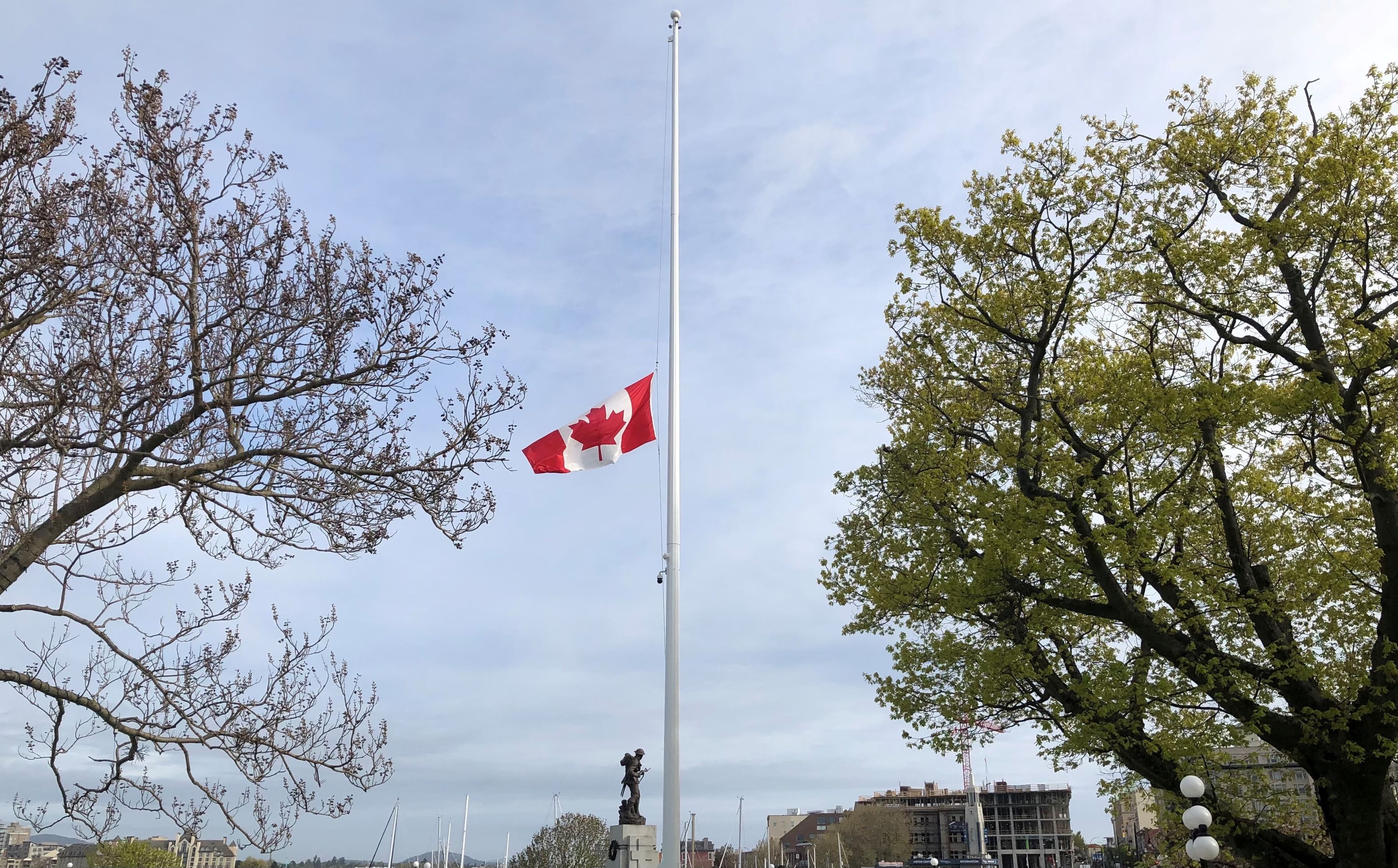
Canada's national flag flies at half-mast at the British Columbia Legislature in Victoria in British Columbia, Canada, May 30, 2021. /Legislative Assembly of BC handout via Reuters
Canada's national flag flies at half-mast at the British Columbia Legislature in Victoria in British Columbia, Canada, May 30, 2021. /Legislative Assembly of BC handout via Reuters
Liu Xin: In 2008, then Prime Minister Stephen Harper delivered a formal apology to Indigenous people suffering "generational and cultural dislocation resulting from the schools." And 13 years later, current Prime Minister Justin Trudeau said sorry again, it was something he said that we could not undo in the past, but we can pledge ourselves every day to fix in the present and into the future. Besides the apologies and pledges, has the system, including the government and the church, taken substantive actions fast enough to really fix the matter?
Cadmus Delorme: More could be done. I am not going to stake up that the government, the churches and everybody have done an amazing job. More could be done. The thing is, it's not the government and the church's obligation to come to a community or a nation and say we're here to fix you. The thing is there are over 600 rights holder First Nations in Canada. I'm the chief of one of them. The way that we're approaching this is we have a plan. We have a strategy. And what we do is we advise and then tell the government, we tell the church, the Roman Catholic Church. This is what we're doing. We need you to invest in this plan to help us because you inherited this, but your leaders before you put our leaders before us in this state.
Canada has been investing in our plan. The church has been investing in our plan. So, every nation across this country, the 600 rights holders in the First Nations, they are starting to present their plans, and so action is beginning to come. So, it's not just the government or the churches. Everybody has to approach this.
And that's the way Cowessess, my First Nation is approaching this, and we are making strides. We now have children in jurisdiction back in our responsibility, which is a part of our healing journey. We do have our own laws that we want funded, and we want to make sure that we coincide in economics—economics is really big in our recovery. So, Canada, the province and the churches have been responding to us, but can more be done? Absolutely more could be done.
03:29
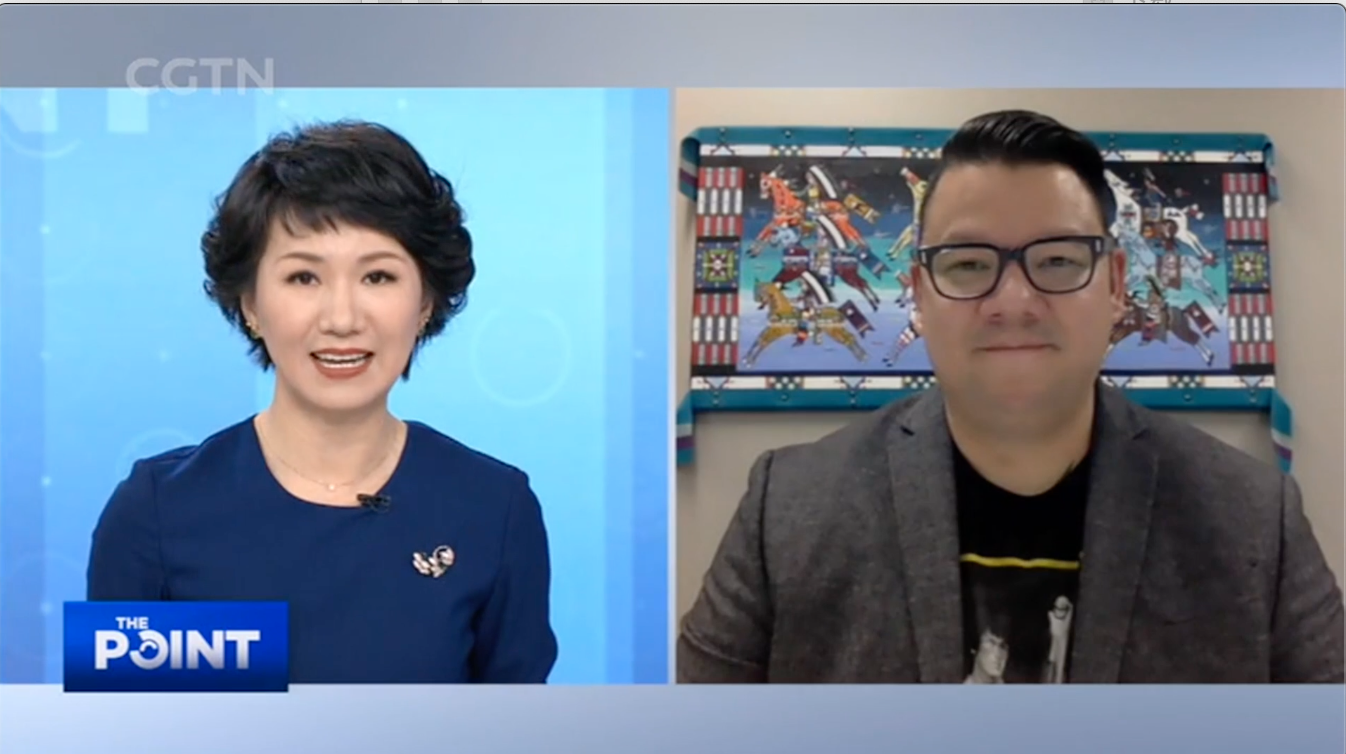
Liu Xin: For another perspective, I'm pleased to be joined by Jada Yee, Director of Business Development of Five Hills Qu'Appelle Tribal Council. Mr. Yee, thank you very much for joining us. How do you understand the kind of systemic racism and discrimination toward people of Indigenous origins and other non-whites or non-Christian peoples in Canada?
Jada Yee: You know, as being both first Indigenous and Chinese. It's well documented that when the Chinese first came here, there were systemic racism, just blatant racism, that forced the Chinese underground in the tunnels in Moose Jaw. And fast forward a couple of decades, and you have the Indigenous people that have been systematic racism since the Indian Act has been enacted in the 1800s.
I look more First Nations than Chinese and with systemic racism, being followed around by security guards or being stopped by police and asking me where I was going, and being questioned upon where I was going, being stopped by the police when I was driving around in just my car.
So even trying to look for jobs, growing up. I specifically remember, when I was trying to look for a career in high school, my guidance counselor told me, just because I'm Indigenous, there's really only two jobs for me, which was the police and military.
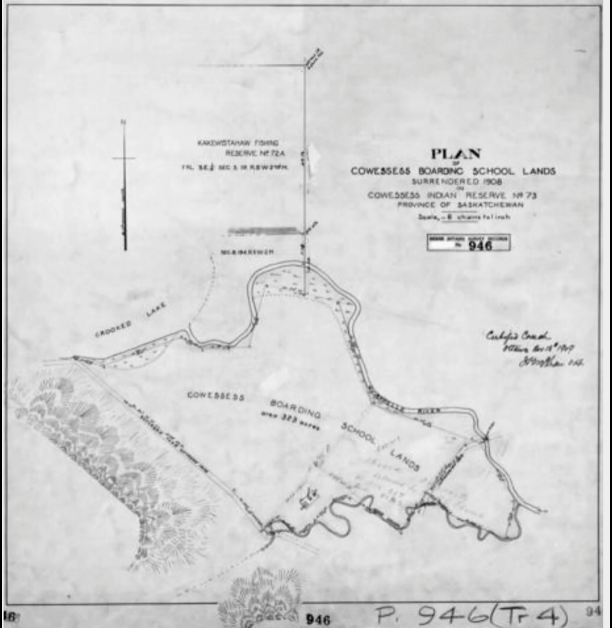
The area of the Marieval Indian Residential School is seen in an undated map on the Cowessess Reserve near Grayson, Saskatchewan, Canada. /Reuters
The area of the Marieval Indian Residential School is seen in an undated map on the Cowessess Reserve near Grayson, Saskatchewan, Canada. /Reuters
Liu Xin: Why these schools were allowed to run for over 100 years, and it has taken so long after the 1970s when the schools were closed, for the kind of atrocities that were committed in these schools to eventually come to light?
And finally, there have been reports all the time about children being abused and so on and so forth. Have you thought about the reasons behind the failure of the system or in the system to address the cultural genocide earlier and more effectively?
Jada Yee: I have those questions too. We as Indigenous people still have those questions as to why were these schools first started? What was so wrong about our culture? And it was only until a couple of years ago where non-Indigenous and the government and the church were finally willing to talk about this, but only to a certain extent, because when we talked about, we knew about these mass graves for generations, we knew, and we talked about them, but nobody wanted to listen to us.
But now, you look at Cowessess with the 751 unmarked graves, now they are forced to look at that and to have that difficult conversation.
Liu Xin: Many thanks to Chief Delorme and Jada Yee for bringing us their firsthand perspective.
07:50
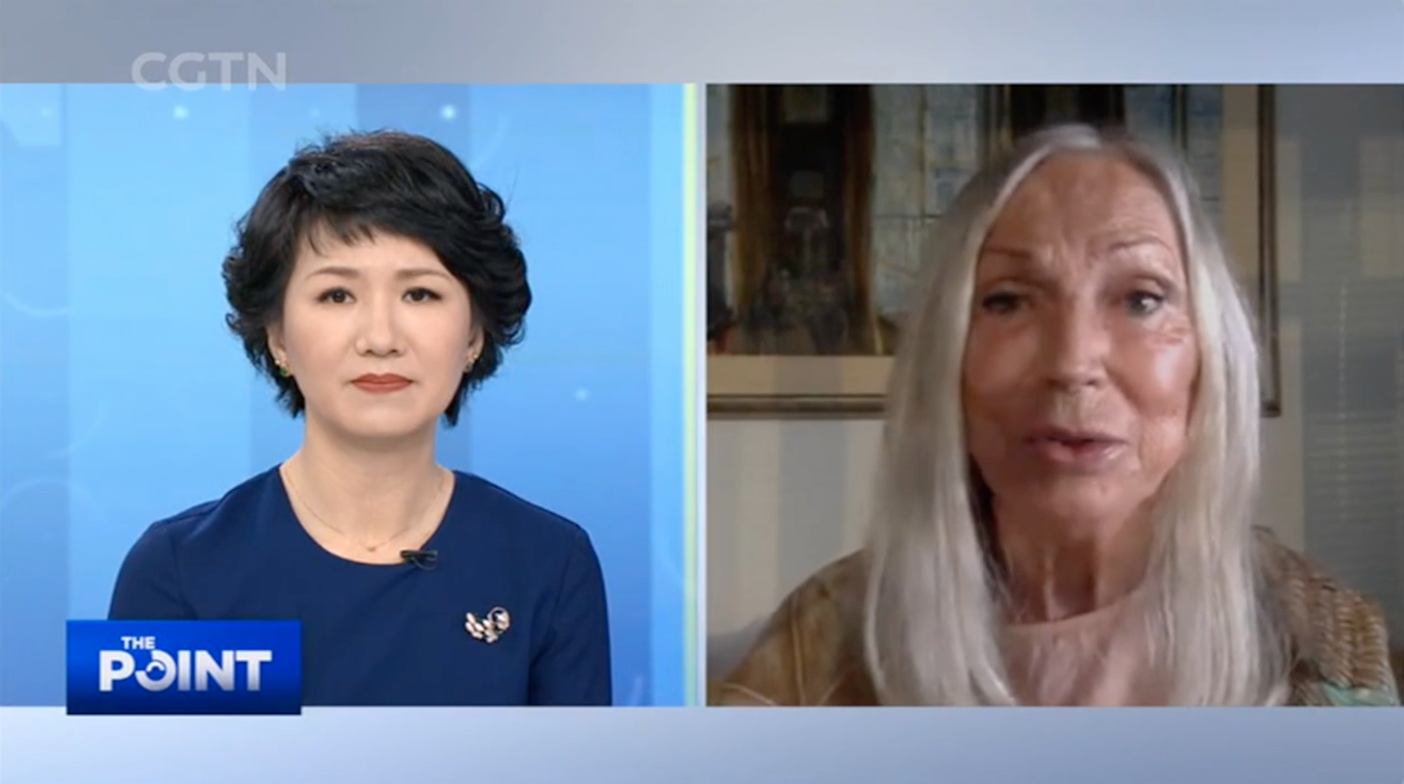
Liu Xin: In recent months over 1,300 remains or unnamed graves have been discovered near former boarding schools for Canada's Indigenous people, exposing the dark secrets of the notorious residential school system.
The system, led by Canada's first Prime Minister John Alexander Macdonald and administered by the church, ran uninterrupted for a century despite disquieting reports of abuse of students mentally, physically and sexually. The objective that the school system was to separate the children from their families, culture and identities, and bring them up as Christians.
At least 150,000 children were sent to those schools from all over the country. With the discovery of the graves, more and more survivor stories are also coming to the surface. Joining me now from Canada is Pia Shandel, a senior media consultant who has interviewed some of the survivors. Welcome to The Point, Pia. Thank you very much for joining us. Now help us understand from when to when did you do such reportings, and what were your main findings through your interviews?
Pia Shandel: Periodically, I would have the ability to interview on air a survivor. It would be if someone I knew was able to put us together. It was not in a formal sense, but every time I was able to speak with a survivor, it was always the same story.
It was devastating to listen to it. Seven generations of Indigenous families were so deeply impacted by this unfortunately very successful attempt to take the Indian out of the people. An attempt which was jointly undergone by our government, and primarily the Catholic Church, but also the Anglican Church and other Protestant Churches.
But you might wonder, why have we not heard the stories of the survivors to the degree that this discovery of unmarked graves, has brought to the fore. As far as I can tell, it's fear and shame.
These little children, sometimes as young as three and four, being unceremoniously ripped from their families, told they cannot speak the language that they speak, they cannot practice their culture. And these little, tiny little people were put into these prison-like atmospheres where they were severely punished for any Indianness that they might exhibit.
And when I hear the stories from now admittedly middle-aged survivors, it just breaks my heart that any institution, much less the government of Canada and the Catholic Church, could inflict such horrors on these little defenseless, vulnerable children, many of whom spent years and years in these schools.
It broke the families. It caused seven generations of these children to grow up without any understanding of family life, of how to be a parent. And we wonder why in modern times, the idea of the drunken Indian or that loser Indian caught hold in society.
When I came to Canada with my family from Europe at the age of three, I remember Klondike Days and lots of First Nations interactions with our white community, and it was a point of respect. They would appear in their beautiful regalia, and we would dress up as Klondike people, and it was fun. We have no idea of the cesspool of pain that these Indigenous people were trying to stay above, were trying to succeed in life after being broken as children.
Liu Xin: When you were doing these reports, you were talking about this on TV, right? It was not some inconspicuous, you know little columns in some difficult to find publication somewhere.
Did you have any difficulty publishing these stories, airing these stories, and what were the impact? I mean people saw it. The government must have saw it all, and the Indigenous people must have saw it. What happened to these reports? What were the reaction?
Pia Shandel: Well, first of all, they were radio, not television, so the impact was less. I was never able to get survivors to go on camera, which was an important distinction. The shame and the fear. But on the radio, I could get them to speak on a personal basis. Of course, I would receive feedback and comments from listeners that were sympathetic and shocked and so on. But there was never any sense that institutions should be examined, criminal investigations should be begun, or even that these dear people should even be taken seriously. It's not that people didn't believe it. They thought maybe they were exaggerating or that was another time, another place, who cared. You know, I think the great wrong was done.
But again, seven generations of First Nations people, impacted by this massive culling of the children, breaking the bonds of love and confidence. So not only are these children in these schools getting an inferior education, being utilized for labor, beaten, abused in many unspeakable ways. But meanwhile, in our non-Indigenous schools, the story was never told. It was always presented much as though a Prime Minister and the archbishops, and everybody wanted it to be, that these were not civilized people. And we were so kindly presenting them with an opportunity to become civilized.
They actually had government acts, for example, in 1887 (Correction: 1857), the Gradual Civilization Act. In other words, we must gradually civilize these uncivilized natives. What a difference from how people view First Nations today, when they look to them for some return to spiritual concepts that they have, before they were so unceremoniously wiped out.

